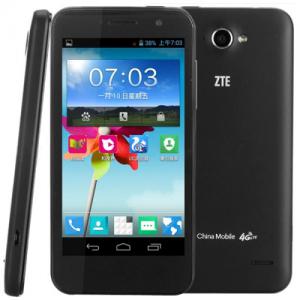Flash firmware on ZTE Q505T
Mobiles >> ZTE >> ZTE Q505T| Specifications | Reviews | Secret codes |
| Unlock phone | Root phone |
| Backup | Flash Firmware | Screenshot |
How to flash ZTE Q505T?
Why reinstall the firmware?
Errors begin to appear in the Android operating system.
Some installed applications do not open.
Some programs from the Play Market do not start.
The phone turns off for no apparent reason.
The phone slows down a lot during operation.
You are not satisfied with the functionality of the stock firmware.
Where can I find the firmware?
On the official website of your phone manufacturer.
On specialized resources where users post custom or official OS.
What should be done before installing the firmware?
Back up your contacts and user data and transfer it to your computer.
Insert an SD card into the gadget. It must have enough memory for the firmware.
Find out the exact model of your smartphone.
Fully charge your device. If the battery runs out during the firmware, the device will no longer turn on.
Find and download the archive with Firmware. Place it on the SD card.
Installing TWRP Recovery
Download the Official TWRP App to your phone from the Play Market. And install this app.
At the first start, you need to give consent to future manipulations, as well as consent to granting the Superuser rights to the application. Check the checkboxes and press the 'OK' button.
After moving to the next screen, you need to select the 'TWRP FLASH' item and give the application root rights.

On the main screen of the application, the 'Select Device' drop-down list is available, in which you need to find and select the device model for installing the recovery.
After selecting a device, the application will direct the user to a web page to download the appropriate modified recovery environment image file. Download the suggested *.img file.
After downloading the image file, go to the main screen of the Official TWRP App and press the 'Select a file to flash' button. Select the file downloaded in the previous step.
Press the 'FLASH TO RECOVERY' button and confirm your choice, press 'OK'.
The recording process is very fast, and upon completion, the message 'Flash Completed Succsessfuly!' appears. Click 'OK'. The TWRP installation procedure can be considered complete.
Copy the required files to the SD card. Using a PC or laptop card reader, it will be much faster.
Insert a SD memory card into the phone.
To reboot in recovery, it is convenient to use a special item in the Official TWRP App menu, accessible by pressing the button with three stripes in the upper left corner of the main screen of the application. We open the menu, select the 'Reboot' item, and then tap on the 'REBOOT RECOVERY' button. The phone will reboot into the recovery environment automatically.
Firmware via TWRP

Before flashing, it is recommended to clear the 'Cache' and 'Data' sections. This will delete all user data from the device, but avoid a wide range of software errors and other problems. You must press 'WIPE' on the main screen.
Everything is ready to start flashing. Press the 'Install' button.

On the file selection screen, at the very top there is a 'Storage' button for selecting an SD card.
Select the location where you copied the files..

Find the file we need and click on it. A screen opens with a warning about possible negative consequences, you need to check the item 'Zip signature verification', which will avoid using corrupted files when writing to the phone's memory sections.
The procedure for writing files to the phone's memory will begin, accompanied by logging and filling in the progress bar.
The completion of the installation procedure is indicated by the inscription 'Successful'.
Summary: Design: Bar; SIM Quantity: Single SIM; SIM Types: Micro SIM Card; CPU: MSM8926; Processor: Quad Core, 1.2GHz; Operating System: Android 4.3; RAM: 1GB; ROM: 4GB; External memory: 32GB (not include); Sensor: Light sensor, Proximity sensor, Acceleration sensor, CMOS; Support Language: English, Simple Chinese, Traditional Chinese; Additional Features: Calculator, e-book, alarm clock, calendar, recorder, scene mode, theme mode; Screen Size: 4.5 inch; Screen Type: TFT; Resolution: 854 x 480 pixels; Camera Quantity: Dual; Front Camera: 0.3MP; Back Camera: 5.0MP; Video recording: Yes; Audio: MP3, WAV, MIDI, OGG, AMR; Video: 3GP, MP4; Picture: JPG, PNG, BMP, ...
Comments, questions and answers on the flash firmware ZTE Q505T
Ask a question about ZTE Q505T




